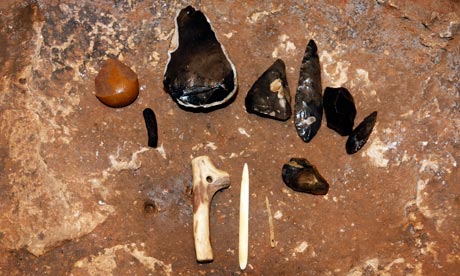 Researchers say early humans were limited by brain power not manual dexterity when making stone age tools. Photograph: David Sillitoe/Guardian
Researchers say early humans were limited by brain power not manual dexterity when making stone age tools. Photograph: David Sillitoe/GuardianFrom Popular Mechanics:
Evolutionary advance saw stone-age humans master the art of hand-toolmaking and paved the way for language to develop.
Stone-age humans mastered the art of elegant hand-toolmaking in an evolutionary advance that boosted their brain power and potentially paved the way for language, researchers say.
The design of stone tools changed dramatically in human pre-history, beginning more than two million years ago with sharp but primitive stone flakes, and culminating in exquisite, finely honed hand axes 500,000 years ago.
Read more ....










































